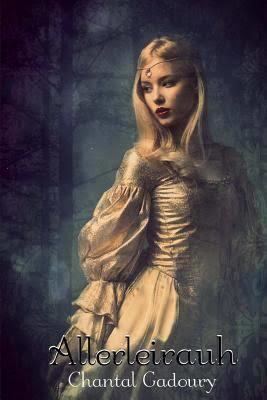8.2 /10 1 Votes
Name All-Kinds-of-Fur Country Germany | 4.1/5 Goodreads Aarne-Thompson grouping 510B Originally published 21 December 2015 | |||||||||||||||||||||||||||||||||
 | ||||||||||||||||||||||||||||||||||
Related Similar Grimms' Fairy Tales, Brother and Sister, The Goose Girl, Jorinde and Joringel, King Thrushbeard | ||||||||||||||||||||||||||||||||||
Let s play the wolf among us book of fables chapter 2 allerleirauh or the donkey skin girl
"Allerleirauh" (English: All-Kinds-of-Fur", sometimes translated as "Thousandfurs") is a fairy tale recorded by the Brothers Grimm. Since the second edition published in 1819, it has been recorded as Tale no. 65. Andrew Lang included it in The Green Fairy Book.
Contents
- Let s play the wolf among us book of fables chapter 2 allerleirauh or the donkey skin girl
- eng sub romaji mp3 allerleirauh hatsune miku
- Synopsis
- Commentary
- Adaptations
- References
It is Aarne–Thompson folktale type 510B, unnatural love. Others of this type include "Cap O' Rushes", "Donkeyskin", "Catskin", "Little Cat Skin", "The King who Wished to Marry His Daughter", "The She-Bear", "Mossycoat", "Tattercoats", "The Princess That Wore A Rabbit-Skin Dress", "Katie Woodencloak", and "The Bear". Indeed, some English translators of "Allerleirauh" titled that story "Catskin" despite the differences between the German and English tales.
eng sub romaji mp3 allerleirauh hatsune miku
Synopsis
A king promised his dying wife that he would not marry unless it was to a woman who was as beautiful as she was, and when he looked for a new wife, he realized that the only woman that could match her beauty was his own daughter.
The daughter tried to make the wedding impossible by asking for three dresses, one as golden as the sun, one as silver as moon, and one as dazzling as the stars, and a mantle made from the fur of every kind of bird and animal in the kingdom. When her father provided them, she took them, with a gold ring, a gold spindle, and a gold reel, and ran from the castle the night before the wedding.
She ran far away to another kingdom, and slept in a great forest there, but the king of that place and his dogs found her while he was hunting. She asked the king to have pity on her and received a place in the kitchen, where she worked, and because she gave no name she was called "All-Kinds-of-Fur."
When the king held a ball, she snuck out and went to it in her silver dress. The next morning, the cook set her to make soup for the king, and she put her golden ring in it. The king found it and questioned the cook and then All-Kinds-of-Fur, but she revealed nothing. The next ball, she went dressed in her dress of stars and put the golden spindle in the soup, and the king again could discover nothing.
The third ball, she went in the golden dress, and the king slipped a golden ring on her finger without her noticing it and ordered that the last dance go longer than usual. She was not able to get away in time to change; she was able only to throw her fur mantle over her clothing before she had to cook the soup. When the king questioned her, he caught her hand, seeing the ring, and when she tried to pull it away, her mantle slipped, revealing the golden dress. The king pulled off the mantle, revealing her, and they married.
Commentary
Among variants of this tale, the threat of enforced marriage to her own father, as here, is the usual motive for the heroine's flight, as in "The She-Bear", "Donkeyskin", and "The King who Wished to Marry His Daughter", or the legend of Saint Dymphna, but others are possible. Catskin fled because her father, who wanted a son, was marrying her off to the first prospect. Cap O' Rushes was thrown out because her father interpreted her words to mean she did not love him. The Child who came from an Egg fled because her (apparent) father had been conquered by another army. "The Bear" flees because her father is too fond of her and keeps her prisoner to keep her safe.
The motif of a father who tries to marry his own daughter is overwhelmingly found in fairy tales of this variety, ending with the three balls, but it also appears in variants of "The Girl Without Hands". The oldest known variant is the medieval Vitae Duorum Offarum; it appears in chivalric romance in Nicholas Trivet's Chronique Anglo-Normane, the source of both Chaucer's The Man of Law's Tale and John Gower's variant in Confessio Amantis, and in Emaré. It also became attached to Henry the Fowler.
When the motive is the enforced marriage, many modern tales soften it, by representing the daughter as adopted (as in Andrew Lang's version of "Donkeyskin" for The Grey Fairy Book), the marriage as put forth and urged by the king's councillors rather than the king himself, or the entire notion being a fit of madness from which he recovers in time to attend the wedding. Alternately, the undesired marriage may be to an ogre or monster.
Variants of "Cinderella", in which the heroine is persecuted by her stepmother, include "Katie Woodencloak", where the heroine is driven off by the persecutions and must, like Allerleirauh, seek service in a kitchen.
The heroine does not always have to flee persecution; Tattercoats is denied permission to go to the ball because her grandfather had sworn never to look at her, but he has not driven her off.
